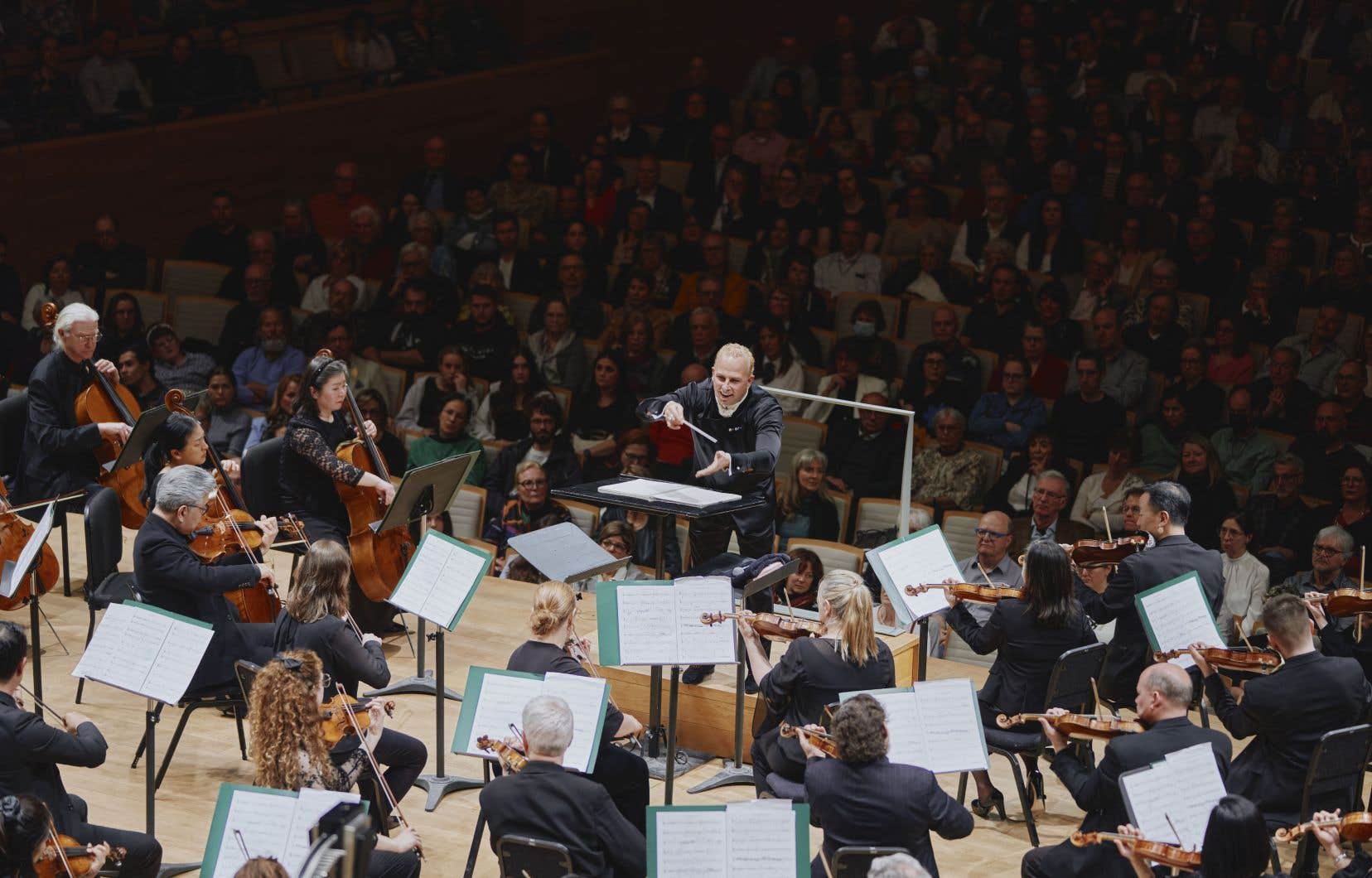The Philadelphia Orchestra and Yannick Nézet-Séguin were visiting Montreal on Friday, hosts of the Orchester Métropolitain. In terms of touring orchestras visiting the Maison symphonique, the experience was even more exhilarating than the recent concert by the Orchester de Paris, although impressive under the direction of Klaus Mäkelä.
If the Philadelphia Orchestra is one of the “ Big 5 “, It is not a coincidence. But even in this closed club there are scales of value. The last time we saw such demonstration and expertise at such a level was Georg Solti and his Chicago Symphony in the 4e Symphony by Tchaikovsky, in the mid-1980s, in Paris.
There is the overall sound, round and powerful, that Yannick Nézet-Séguin highlighted from the Symphony No. 4 by Florence Price. But the exceptional elements are these brass interventions, which are like laser cuts, the trumpets in particular. Each dosage is just right, each attack impeccable and nothing seems to be able to happen to them (no slip-up). The same goes for the horns and the trombones, which fit so well. And there are the woodwinds, wonderful (oboe, bassoon). As if to show that everything remains very human and that art is difficult, the superstar of the orchestra, the clarinetist Ricardo Morales, cracked a note in his theme of 3e movement of the 2e Symphony by Rachmaninov.
But what is also striking is the soft grain of the strings and their power (violins I), the density of the violas, too, particularly in 1er Rachmaninoff movement. The only ones that were “normal” were the double basses, but mainly because of the acoustics of the Maison symphonique; placed on the right, the desk undoubtedly benefits from being raised.
Legitimacy
We could make long digressions on the legitimacy of going so far as to bring a Florence Price symphony on tour, because it is still not the 1er choice of the great masterpieces of the History of music. We are all the more comfortable discussing it when the recording of the 4e Symphony by John Jeter appeared as a world premiere at Naxos we were a few days later at the microphone, on the radio to parallel his 2e movement with that of the New World Symphony who inspired him so much. But “interesting” does not mean “unmissable”.
The limits of Symphonies of Price are fairly constant: 1er movements with a somewhat sparse construction which perhaps want to say too much. But, particularly in the case of Fourththe slow movement, homage to the 9e by Dvorak, is a very touching jewel, the 3e shutter is a perfect example of dances (Juba dances) implemented in the symphonies of Price and the Final is a success that has a great effect.
So we can adopt a museum approach and say that the Rijksmuseum in Amsterdam, the Metropolitan Museum in New York, the Louvre or the Hermitage only show masterpieces, the greatest orchestras are made to play the cream of the directory. But from another angle, bringing Florence Price on tour is legitimate, because the orchestra is American, and as researchers and specialists have shown, musical America has failed to recognize the African-American branch of its heritage to treat a more European heritage. So giving Price’s music this commitment, this energy and this sonic adornment is a very honorable approach and a form of return of things – which could perfectly also concern the Negro Folk Symphony by Dawson, which Yannick Nézet-Séguin also recorded.
Of the Symphony No. 2 of Rachmaninov, we remain above all stunned by the 2e movement, absolutely perfect, which matched the grandiose success recorded in Philadelphia by Eugene Ormandy in 1951. There is even an even sharper detail, an accentuation between cellos, snare drum and xylophone before the 2e return of the lyrical theme. Everything else was mind-blowing in its precision, strength and microdosing. This movement really propelled the rest of the symphony. Yannick Nézet-Séguin does not languish on the 3rde movement, unlike certain sections of the 1er movement. Everything is covered in a large and generous flow. THE Final preserves the hold of 2e flap, in a gigantic sound party, of sumptuous and exhilarating opulence.
We were a little less convinced by the 1er shutter. Without there being anything prohibitive, Yannick Nézet-Séguin has not varied or softened his vision. He oscillates between very precise phrasings and others that are precisely relaxed without us really knowing why. Internal breathing was intrinsically felt more freely and naturally by Ivan Fischer during his memorable concert here with the Budapest Festival Orchestra.
A grand evening, obviously, which thrilled the audience who had filled the Maison symphonique to the brim.
